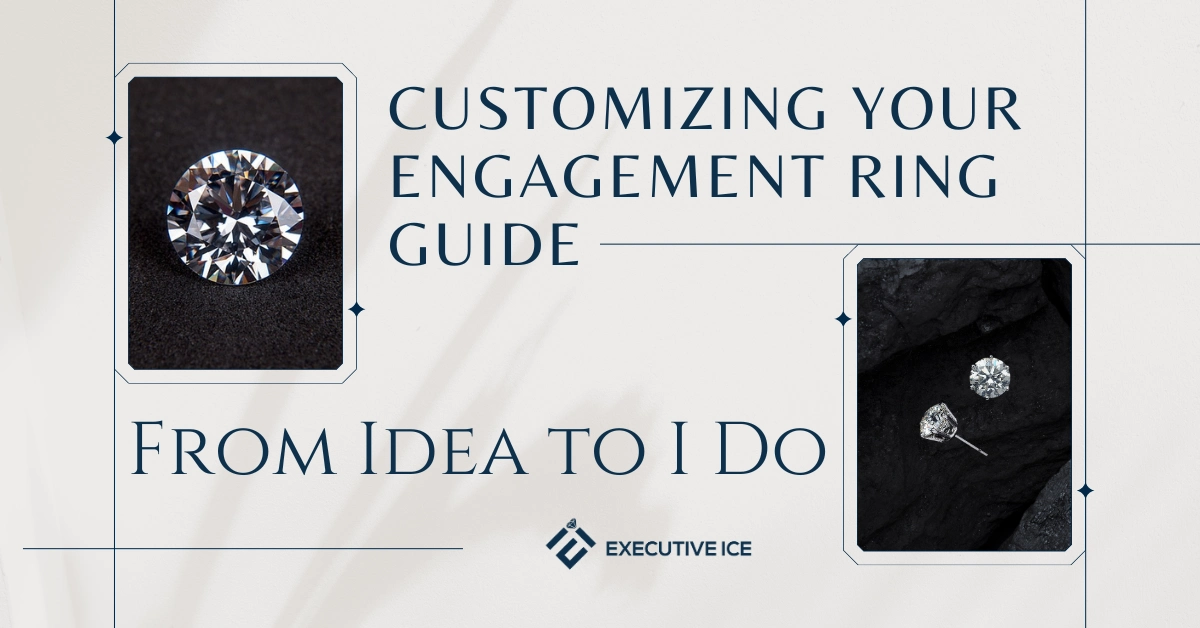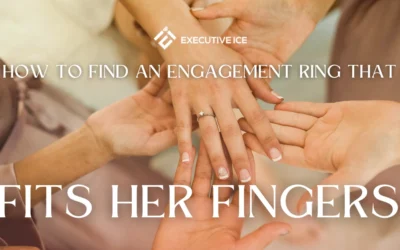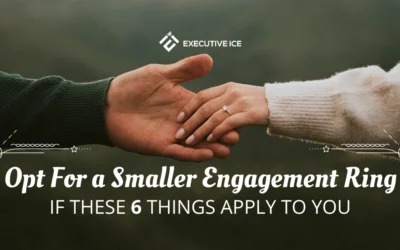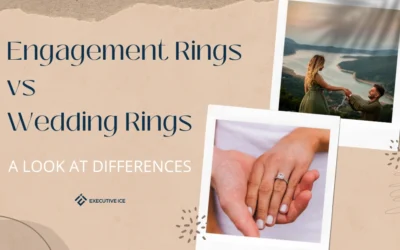Planning to pop the question soon and looking to add a unique touch to that special moment?
Finding the perfect diamond and setting can sometimes feel like an endless search. Maybe you’ve spotted a gorgeous ring on someone else but can’t seem to locate it online. This is where the magic of custom engagement rings steps in.
Don’t fret if you’re new to the world of jewelry customization. With the right inspiration, technology, and a few key decisions, you can design a ring from scratch, tailored to your perfect stone, preferred metal, ideal setting, and the right band thickness.
1. Set Your Budget
Firstly, bear in mind that the ‘custom-made’ label often comes with an extra price tag, and rings are no different.
Establish a budget upfront, determining how much you’re comfortable spending and then firmly stick to it. Shopping without a set budget can often lead to temptation and potentially overspending.
Entering the world of diamonds without an idea of their cost can be disorienting. You might fall in love with a piece that’s way above your budget on your first glance, setting an unrealistic standard for your subsequent searches.
Ring settings can range anywhere from $200 to $15,000, although the majority fall between $1,000 and $3,000. That’s why having a clear budget is crucial. It keeps you from falling head over heels for a $15,000 setting — and remember, this cost is just for the setting.
The price of a ring setting hinges on several factors such as its popularity (a result of supply and demand), design, choice of metal, the brand, and whether you plan to use solely diamonds or include other precious stones in your ring.
2. Use an Inspiration Board
Once you have a clear budget, it’s time to unleash your creativity — in a structured manner, of course.
An inspiration board is a handy tool for capturing your likes and dislikes concerning different rings and design elements.
The more visual your board is, the easier it becomes for both you and your jeweler to design your dream ring. Include photos, sketches, and notes that detail the aspects you find appealing.
Pinterest is an excellent platform for gathering engagement ring ideas. With its seemingly endless supply of designs, you can build a robust inspiration board to aid your customization journey.
3) Select the Right Jeweler
Selecting the right jeweler is a crucial step in your ring customization process. Purchasing your diamond from a reputable jeweler ensures you’re investing in a genuine gem, getting a fair price, and have access to a wide array of choices.
Peruse our Top Diamond Ring Retailer Comparison Guide for insight.
Consider using references or reviews from reliable sites and sources to help you make the right choice.
Most well-known online retailers offer engagement ring customization options; the difference lies in the convenience of their tools, their collection, design ideas, and sales support.
When customizing a ring, you’re often looking for something unique, something that’s not available among hundreds of pre-made settings. This means you’ll need a jeweler with a strong design background, who can understand your needs and translate them into a stunning creation.
In our opinion, James Allen stands out with their interactive web app that aids in designing your engagement ring. Try their engagement ring designer for free today, and start bringing your vision to life.
4) Explore Various Custom Engagement Ring Styles
After selecting your jeweler, invite your loved one to try on various ring styles. This will help you determine her accurate ring size and identify which ring style best complements her hand.
You’ll also get insights into her preferred metal, band thickness, and diamond setting. Make sure to take note of all these details and incorporate them into your final design.
It’s not usually advisable to surprise your partner with a custom-made engagement ring. Remember, what may look fantastic to you might not appeal to everyone. So, make sure she’s involved in the process. Let her experiment with different styles; she’ll likely develop a preference for two or three types, which will simplify your task.
5) Choosing the Main Stone
The focal point of any engagement ring is its central stone. Choosing the right one requires a deep understanding of the 4Cs:
- Carat: This denotes the diamond’s weight. Remember, the largest stone isn’t always the heaviest
- Cut: This is about how ideally the diamond’s facets interact with light, the symmetry, and the proportions to which the diamond was cut. Many people mistakenly equate ‘cut’ with ‘shape’. The cut is the most important factor among the 4Cs; it gives the diamond its brilliance and beauty
- Clarity: Aim for a diamond that’s eye-clean, try to stay away from any inclusion/blemish that will affect diamond appearance (visible) or brilliance (bad location, size, type)
- Color: Ideally, you want a colorless stone. Diamonds are graded from ‘D’ (colorless) to ‘Z’ based on the extent of their brown or yellow color. Typically, an ‘H’ grade is the cut-off for an ideal engagement ring
If you’re looking to save some money while still getting a real diamond, why don’t you consider lab-created diamonds?
6) Find the Perfect Setting
With your central stone chosen, it’s time to find the perfect setting.
While solitaire and three-stone settings are traditional favorites, there are plenty of other exciting options to consider. These include prong, channel, pave, bezel, and flush settings.
The solitaire is the most economical option, allowing for a larger central stone. Pave settings are a bit pricier as they require skillful setting of tiny diamonds in a specific pattern.
In a bezel setting, a metal collar wraps around the diamond, causing it to protrude from the ring. Meanwhile, in a flush setting, the diamond’s top level aligns with the metal band. You can add smaller gems to these settings for an intriguing design.
Brilliant, small, round diamonds work beautifully in a channel setting, which positions them in a channel below the ring surface.
Explore all these options and see what stands out to you. Don’t hesitate to compare and revisit your choices several times.
7) Choose Your Metal
Now is the time to pick the metal for your ring from an expanding array of choices.
You might prefer the classic appeal of gold or platinum, or your selection may be influenced by your desired color, luster, and durability.
Additionally, the choice of metal can be determined by your loved one’s lifestyle. For instance, if she has a glamorous style, you might gravitate towards a 14k gold or platinum ring.
Light-colored metals like platinum or white gold can enhance the brightness of the stone, making them ideal for those who love a bit of sparkle.
For a more modern aesthetic, consider yellow or rose gold.
Keep in mind that while yellow gold and platinum demand minimal maintenance, white gold may need to be re-plated every few years.
8) Decide on Your Design
With your stone, setting, and metal chosen, the design of your unique engagement ring now comes down to your imagination and personal taste.
Refer back to your inspiration board and preferences for guidance. You might consider adding a splash of color to the ring with different gemstones—perhaps your partner’s birthstone, or a favorite colored stone.
However, ensure that the cut, clarity, and color of these additional stones harmoniously complement the central stone.
9) Take Your Time
While wedding rings may not be your forte, and the temptation to rush into a decision may be strong, please pause and give the process the time it deserves.
Remember, this ring signifies your request to the most significant person in your life to spend their future with you. It’s a ring that your partner will cherish for a lifetime. Thus, refrain from making hurried decisions.
That said, it’s wise to begin the process early. Customizing a ring is not an overnight task.
Typically, the journey from conception to completion of a ring spans several weeks to a few months. Your jeweler may propose a few digital renders or create several wax molds for your approval before finalizing the design.
10) Get a Quote
Before launching the creation of your masterpiece, always ensure you receive a quote from your jeweler prior to the commencement of production.
This prevents any surprises due to hidden costs down the line. Moreover, inquire about any fees associated with revisions, sizing, or future modifications.
Bonus: Don’t Forget the Wedding Band
For those forward-thinking enough to consider the wedding band while designing the engagement ring, you are on the right track to ensure the two pieces complement each other.
Don’t hesitate to bring creativity into play with a wrap-around or curved band, provided the engagement ring’s design allows it. This final touch of personalization adds a unique charm to your loved one’s ring set.
Summary
Importantly, be sure that all discussions with your designer—pertaining to costs, stone, metal, and design—are mutually agreed upon and documented in writing, signed by both parties. This proactive approach prevents potential complications down the road.
Now, with these 11 invaluable tips in your toolbox, designing an engagement ring suddenly seems more manageable! Even a beginner can shine nearly as brilliantly as the perfect ring you’re about to create.




